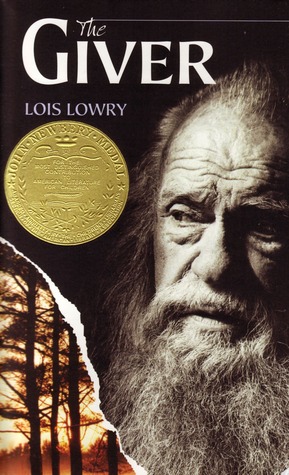
The Giver by Lois Lowry
Lois Lowry’s The Giver is set in a place known simply as “the community”. In the community, everyone is expected to show one another respect and caring—rudeness, lying, and simple exaggeration are all discouraged. Anywhere beyond the community is known simply as “Elsewhere”, and those who break the rules, grow too old or too sick, or simply ask, are “released” to Elsewhere. People are divided by their numbers (ages) and job occupations. Once a person enters the Ceremony of Twelves, they are Assigned their roles in the community—except for Jonas, who is chosen to be the Receiver of Memories, the highest honor of them all. Jonas has no idea what it means to be able to “receive”, but enters training anyway, apprenticing the previous Receiver known as “the Giver.” As Jonas is given memories, he realizes that he and the community have lost more than just the past.
The simple detail given in the book reflects Jonas’s and the community’s point of views. They do not notice color, shape, or form because they have been taught not to. As the book goes on, the detail grows to show Jonas’s worldview expanding. The twist with color is also a clever one that I did not see coming, as is the more major twist towards the end. Even though we may not be able to perfectly see what is happening, we get the idea clear enough.
Dystopian novels are always hit-and-miss with me, and I feel that the one presented here works. Lowry wisely does not explain every facet of the community, as each answer would probably raise another question. There’s no extremely-advanced technology or a dictionary’s worth of terms to keep up with. Although the community, to us readers, is as bizarre as it needs to be, it does not break logic. There’s some sick kind of reason to how the community is run. The lack of explanation for what caused the world to become the way it is works in the story’s favor.
Jonas, being twelve, offers a naïve newcomer’s view on the events taking place. We learn what he learns. Admittedly, I would say that the only character with personalities are Lily, Jonas’s sister; Asher, Jonas’s friend; and the Giver himself. One could argue that this is the point, to show how the community is boring and unison, but the vocal charismas of Asher and Lily kind of undermine that. The Giver himself is an enjoyable character—you expect him to be quiet and mysterious, in that ‘creepy-magic-old-guy’ kind a way, but he’s actually very sweet and soft-spoken. The way he interacts with Jonas is both heartwarming and telling of the setting the story takes place in. The same can be said for the dialogue spoken in the story. It is stilted and awkward, but with reason.
The subjects that story tackles, and the numb tone to which it does, adds to the eerie and mysterious tone of the novel. Murder, loneliness, solitude, and lack of emotion are all discussed in a speculative manner—i.e., how would people act if they did not know what ‘this’ meant? Jonas himself must deal with great emotional suffering as he realizes that the people he loves cannot and do not love him back. The film adaptation was a romance story between Jonas and Fiona, but it’s more of a tragedy here. Jonas has feelings for Fiona, but not only can she not reciprocate them, Jonas himself can hardly understand them. This helps the curiosity as to what caused society to become the way it has.
Though the novel has many things working in its favor, and it builds a not-wholly-original-but-overall-captivating world, it ultimately could have done more. The book is very short and only takes a shallow glance into its circumstances. Many things are left in the air and are unresolved. Now, it is important to know that the book actually has sequels/prequels/midequels? Other books that take place in the same setting. Unfortunately, it is also said that these books are inferior to The Giver, and I probably won’t be reading them. So, judging the book by itself, I don’t think it took advantage of its setting as much as it could have. Also, I know many consider the ending to be artistic and deep and insightful, but I was simply unsatisfied by it.
Overall, I still think The Giver is a fine, if not simple, book.
